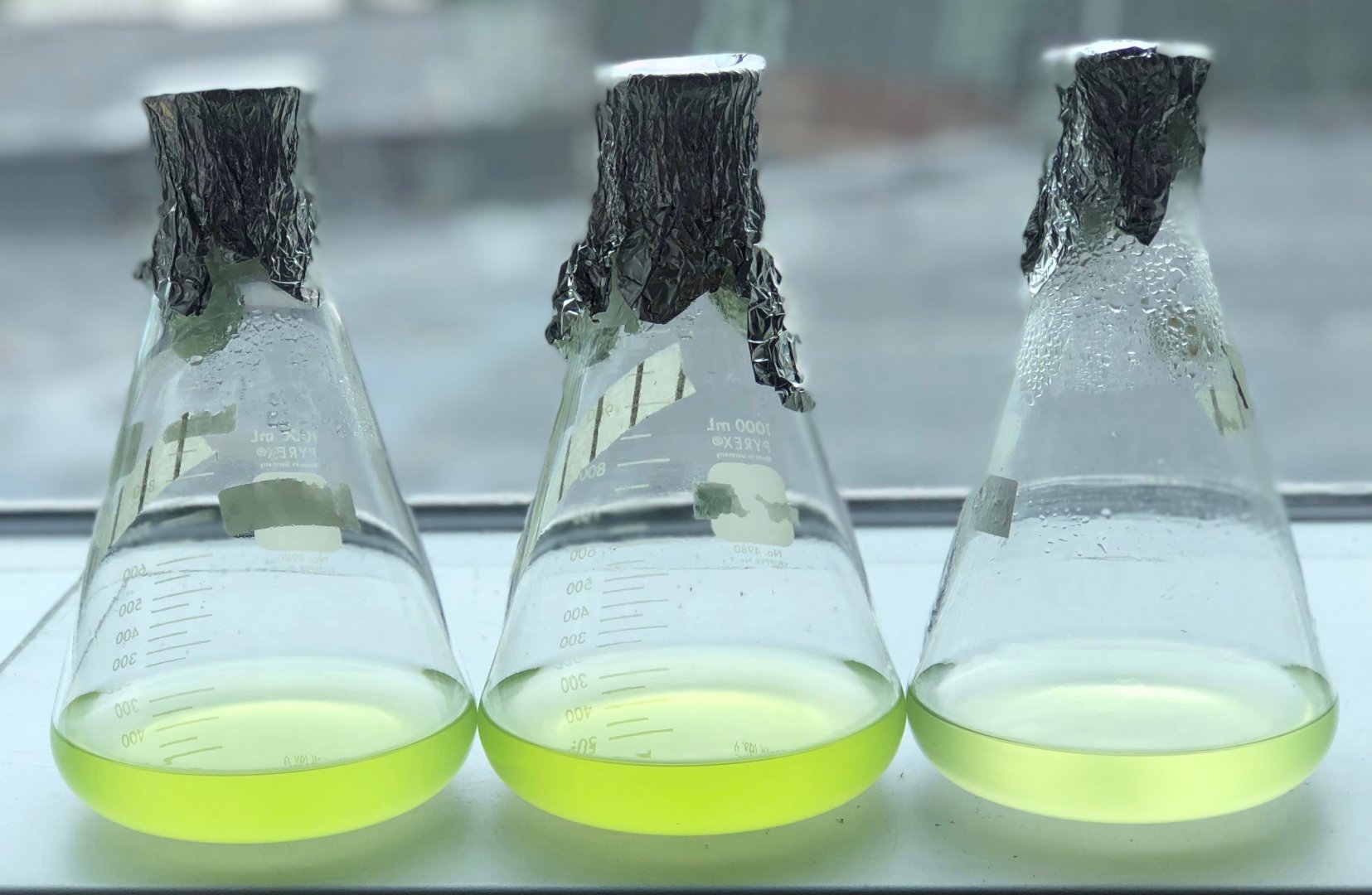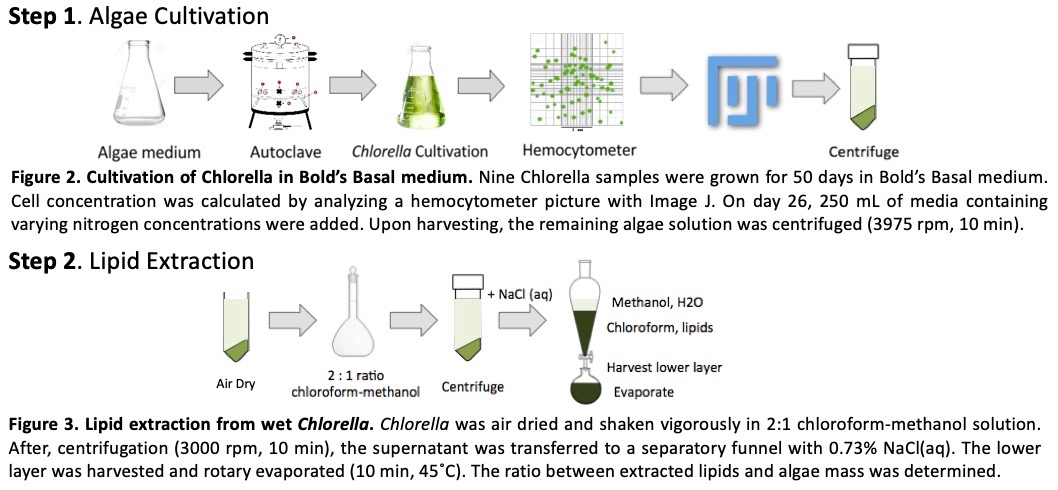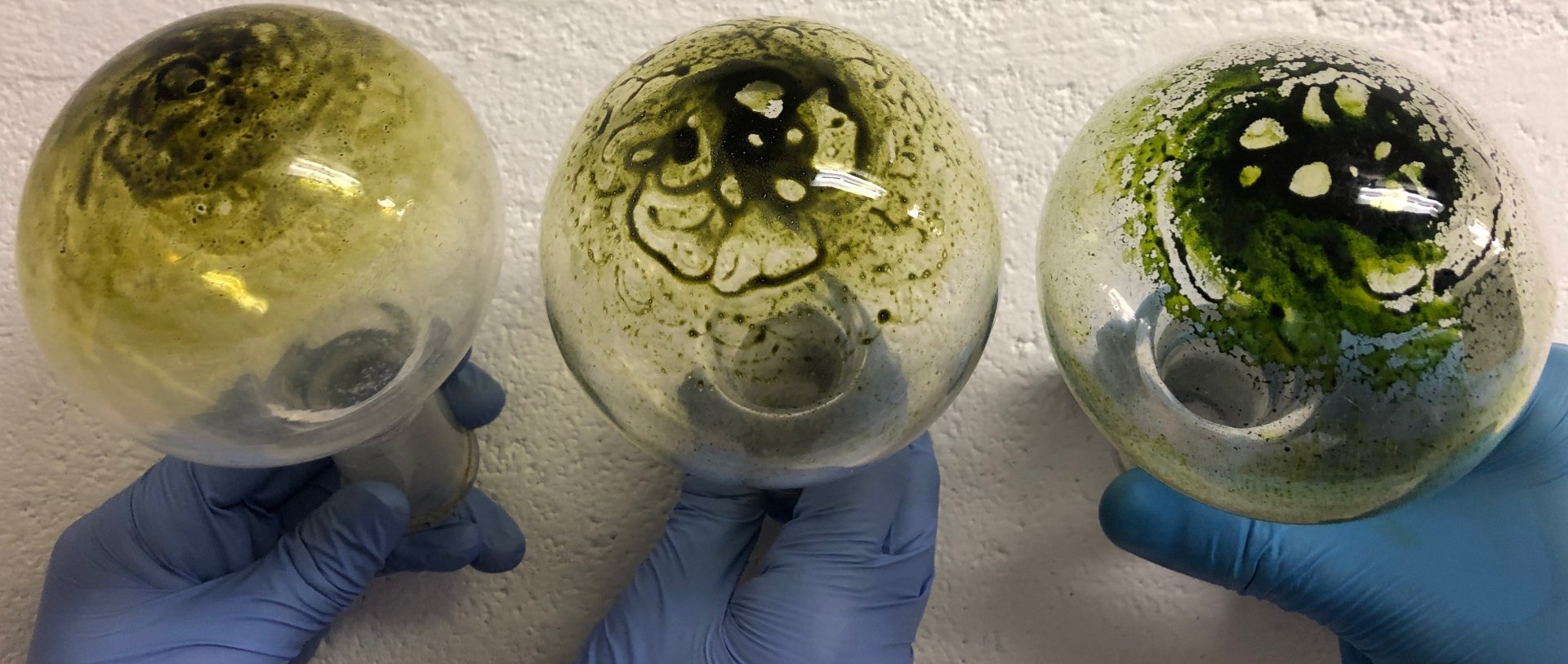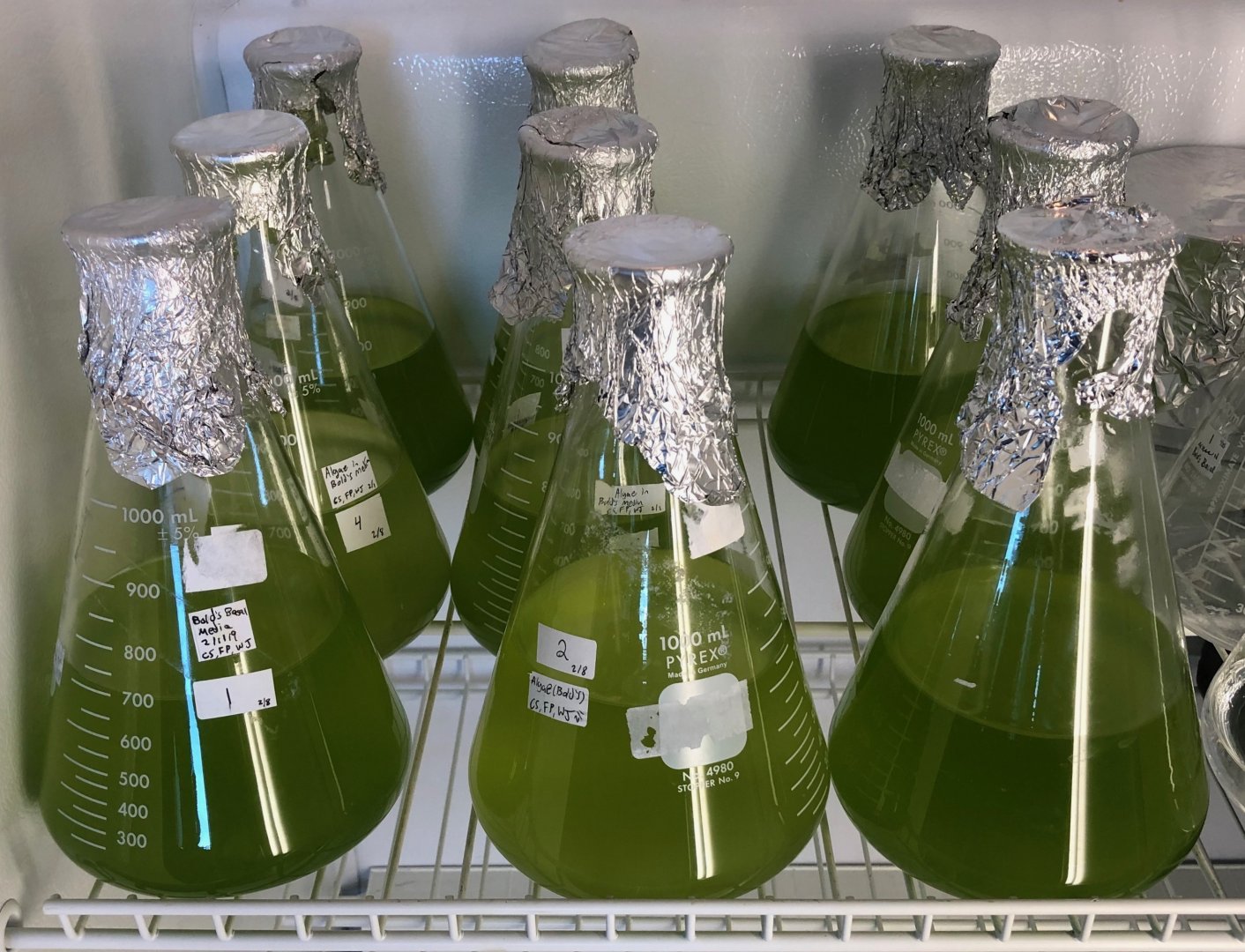Algae Biofuel
Background
Humans are becoming more and more dependent on oil and petroleum based fuels, and we have realized what impact that is having on our planet. The need to discover alternative sources of energy has grown more prevalent. Microalgae is of interest because it requires less land resources than other biofuels and also sequesters carbon dioxide from the atmosphere, reducing its addition to global warming. Lastly, it can remove nitrogen and phosphorous from wastewater. However, using algae to make biodiesel is limited by high production costs and inconsistent/low yields which reduce efficiency and practicality for industrialization on a large scale.
The work of this project is focused on reducing these barriers, to optimize the growth of Chlorella and to increase the yield of lipids for use in biodiesel.

Algae Timeline
2016: Early Stages
The early stages of the project focused on finding the best way to grow the algae and researching what variables could be changed to perhaps increase the efficiency with which biofuel was made. It was also necessary to determine a procedure for extracting the lipids from the mature algae.

2017: Computer Powered Counts
In order to determine how much algae grew per treatment the researchers used to have to look through a microscope and count every single cell on a slide. With the help of one of the other eGarden researchers who had more experience with computer programming, they were able to create an automated system. They could take an image of the slide, and then the program would count each cell. This made measuring concentrations much easier.
2018: Nitrogen Concentration
Now that the cultivation and data collection techniques were established, it was time to begin conducting some experiments to discover what we can do to optimize the production of biofuel. Algae was grown at three different concentrations of nitrogen, low, standard, and high, to see how this would alter the growth of the algae. They discovered that algae grown in low nitrogen concentrations grew the least, but produced the most lipids. These lipids could then be processed into biofuel. At higher nitrogen concentrations more algae grew, but the amount of lipids per amount of algae was less than at the lower concentration of nitrogen.

From left to right: low nitrogen, regular nitrogen, high nitrogen
2019: Future Plans
In the future we plan to further investigate how nitrogen concentration affects lipid production, as well as evaluating some other variables in the growth conditions to see what that reveals.
